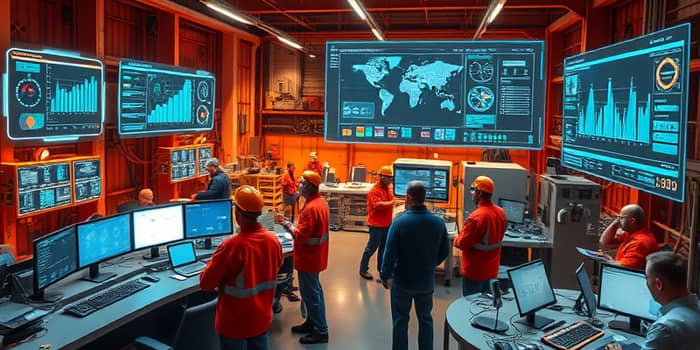
In an era where speed, quality, and efficiency define competitive advantage, integrating digital capabilities with time-tested Lean principles has become imperative. Enterprises that blend data-driven insights with traditional waste-elimination practices position themselves for sustained success.
From humble beginnings in post-war manufacturing to today’s interconnected factories, Lean has always been about doing more with less. As we embark on a new chapter—"Digital Lean"—the philosophy remains unchanged, but the tools have evolved dramatically.
Lean management originated in Toyota’s production system and focuses on delivering value by eliminating waste, optimizing flow, and empowering people. Core methodologies remain as relevant today as ever:
These tools cultivate a culture of relentless continuous improvement and provide a blueprint for waste reduction. Yet, traditional Lean relies on manual data collection, often leading to delays in issue detection and resolution.
Digital Lean transcends the paper, clipboards, and whiteboards of yesterday by harnessing Industry 4.0 technologies. It fuses core Lean tenets with real-time digital capabilities to accelerate improvement cycles.
Key distinctions of Digital Lean include:
By digitizing standard work instructions and visual management, organizations achieve instant access to operational intelligence and close the loop between problem identification and corrective action.
Several technologies underpin a successful Digital Lean transformation. Below is a summary of critical tools and their practical impacts:
Collectively, these technologies create an ecosystem where data collection, analysis, and action occur seamlessly, driving precise and proactive problem solving across the value stream.
Transitioning from analog Lean to a fully digital operation requires thoughtful planning, change management, and a phased approach. Key success factors include:
Begin by digitizing standardized work documents and visual boards. Next, deploy IoT nodes to capture live data, then introduce dashboards and mobile alerts. Over time, layer in AI analytics and digital twins to refine decision-making and simulate layout changes without disrupting production.
Throughout this journey, emphasize hands-on training and empower operators with user-friendly digital interfaces that build trust and drive adoption. Celebrate small wins to maintain momentum and reinforce a culture of teamwork.
Quantifying the business value of Digital Lean is crucial for sustaining support and scaling initiatives. Leading organizations report:
Beyond immediate financial returns, Digital Lean fosters a resilient digital-first mindset and promotes cross-departmental collaboration. As operations evolve, emerging trends such as augmented reality guidance, voice-activated interfaces, and edge-computing analytics will deepen integration between human expertise and machine intelligence.
Looking ahead, the fusion of Lean culture with digital innovation promises factories and service operations that are agile, transparent, and adaptive. Organizations that embrace this synergy will drive continuous value and outpace competitors in speed, quality, and customer responsiveness.
In today’s dynamic marketplace, mastering digital tools to run lean operations is not a luxury—it is essential. By digitizing Lean practices in a structured, people-centric way, companies can unlock powerful synergies, reduce waste like never before, and chart a path toward perpetual improvement and sustainable growth.
References













